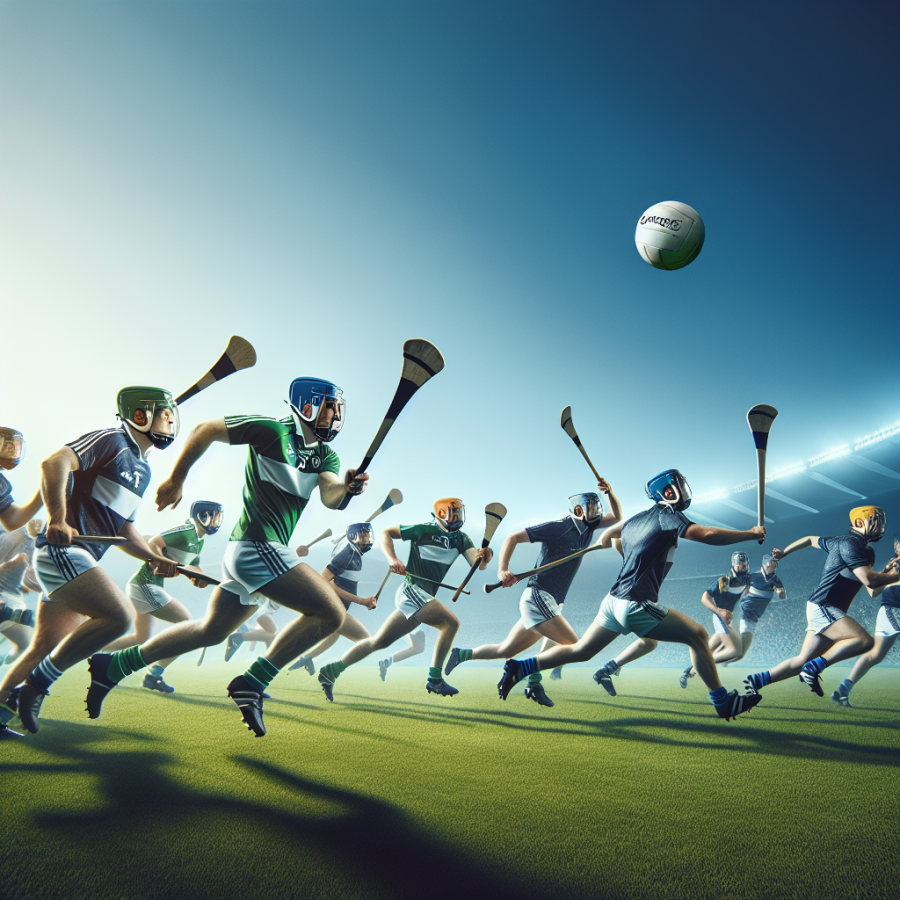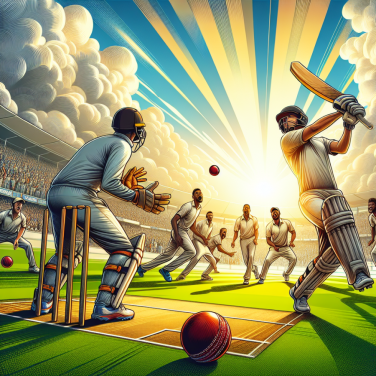Exploring the Rich Traditions of Hurling: Ireland's National Game
Hurling, believed to have been played in Ireland for over 3000 years, is not just a sport but a symbol of Irish culture and identity. Known in Gaelic as "Iománaíocht," this ancient game is intertwined with the country's history, revered legends, and folklore. It has been immortalized in Irish myth as the sport of the gods, played by mythical heroes like Cú Chulainn who are said to have demonstrated extraordinary prowess and skill in hurling.
The tradition of hurling runs deep in the Irish psyche, with families passing down their love for the game over generations. It is a common sight to see children wielding hurleys— the wooden sticks used to play the game — as naturally as they might kick a football. Every parish, town, and county has its team, and loyalty runs high among supporters. In Ireland, the game is more than a mere pastime; it is a community event that brings people together, regardless of age or background.
The game has not only thrived due to its cultural significance but also because of the sheer excitement it offers. Played on a grass field, which is similar in length to a soccer pitch but wider, hurling combines the skills of baseball, hockey, and lacrosse into a fast-paced, high-intensity sport. Players use the hurley to hit a small ball, known as a sliotar, with precision and power. It is a game of remarkable speed — sliotars can reach speeds over 100 kilometers per hour — and requires incredible agility and dexterity from the players.
The rules of hurling have evolved over the centuries, with the modern game governed by the Gaelic Athletic Association (GAA), founded in 1884. The GAA was crucial in standardizing the rules and organizing structured competitions, which played a significant role in the sport’s survival and growth. Today, hurling championships, particularly the All-Ireland Senior Hurling Championship, are among the most anticipated events in the Irish sporting calendar.
Despite being an amateur sport — players don't receive payment for their participation — the level of commitment and skill on display is extraordinary. Training is rigorous, and the physical demands of the game mean that players must be in peak athletic condition. Hurling also demands a high level of coordination and bravery; catching a sliotar requires courage, as the hard ball can be hurtling through the air at formidable speeds.
Read also:
Diving into the World of 'Who Soccer Ya': An In-Depth Analysis
Understanding the Basics of Hurling
Hurling is not just a game; it's a piece of Irish heritage. Dating back over 3,000 years, hurling is often referred to as the 'fastest game on grass' due to the speed at which the ball moves. The sport is played with a stick, known as a hurley, made from ash wood, and a small ball called a sliotar. It requires a combination of agility, strength, and precision. Players can strike the sliotar on the ground or in the air and must skillfully use the hurley to block and catch the ball.
The Field and Players
A traditional hurling field is similar in some respects to a rugby or soccer field. It's a large rectangular grass pitch with H-shaped goals at each end. The objective is to score by either sending the sliotar over the crossbar for one point or under the crossbar into the net for a goal, which is worth three points. Teams are made up of fifteen players, with positions that include the goalkeeper, defenders, midfielders, and forwards.
Rules and Gameplay
Hurling is known for its complex set of rules that facilitate fast-paced and exciting gameplay. Players can run with the sliotar in their hand for a maximum of four steps before they have to bounce or balance it on the hurley. Tackling is allowed as players vie for the ball, but it must be executed in a manner that is not dangerous. The game is played in two halves, each ranging from 30 to 35 minutes, with the time extension at the discretion of the referee.
Skills and Training
To excel in hurling, a player must possess a broad set of skills. Mastery over the hurley and sliotar is vital. Players spend countless hours perfecting their striking, hooking to block shots, and soloing, which involves bouncing or balancing the sliotar on the hurley while running. Physical conditioning is just as important since the sport demands a high level of stamina, speed, and coordination.
The Cultural Significance of Hurling
Beyond the field, hurling holds profound cultural significance in Ireland. It's a symbol of national identity and community pride. Matches, especially those in the All-Ireland Hurling Championship, bring together people of all ages, from the most rural villages to the bustling cities.
Diving into the Fast-Paced Action of Hurling: Skills, Rules, and Championship Excitement
Hurling is often referred to as the "fastest game on grass" and for good reason. This traditional Irish sport combines the speed of lacrosse, the skill of baseball, and the physicality of hockey to create a spectacle of athleticism and excitement. Renowned for its fast-paced action, hurling is a game that captivates with its blend of speed, skill, and passion.
One of the key skills in hurling is the ability to expertly wield the hurley, a wooden stick used to hit a small ball called a sliotar. Mastery of the hurley is essential, as players must be able to strike the sliotar both in the air and on the ground, as well as execute precise passes to teammates. The level of hand-eye coordination required to catch the sliotar on the hurley, known as the “catch” or “clash,” is nothing short of remarkable. Players must also be adept at soloing, which is the art of balancing and bouncing the sliotar on the hurley while running at full speed.
Defensive skills are equally important, with players needing to perfect the art of hooking and blocking to disrupt the offensive play of their opponents. Hooking is a technique where a defender uses their hurley to catch an opponent's hurley during a striking motion, preventing them from hitting the sliotar. Blocking, on the other hand, involves intercepting the path of the sliotar as an opponent attempts to strike it.
Physical fitness is crucial in hurling, as the game demands high levels of stamina, agility, and strength. Players are required to sprint, change direction rapidly, and compete for possession in aerial battles. They cover significant distances over the course of a match, which typically lasts for 70 minutes at the senior level.
The rules of hurling are overseen by the Gaelic Athletic Association (GAA), and they promote a fast, continuous style of play. A key rule involves the prohibition of throwing the ball; instead, players must hand-pass the sliotar, which involves striking it with the palm or wrist. Scoring in hurling is achieved by either sending the sliotar over the crossbar of the goal for one point or into the net for a goal, which is worth three points.
The structure of championship hurling is another aspect adding to the excitement of the sport.




